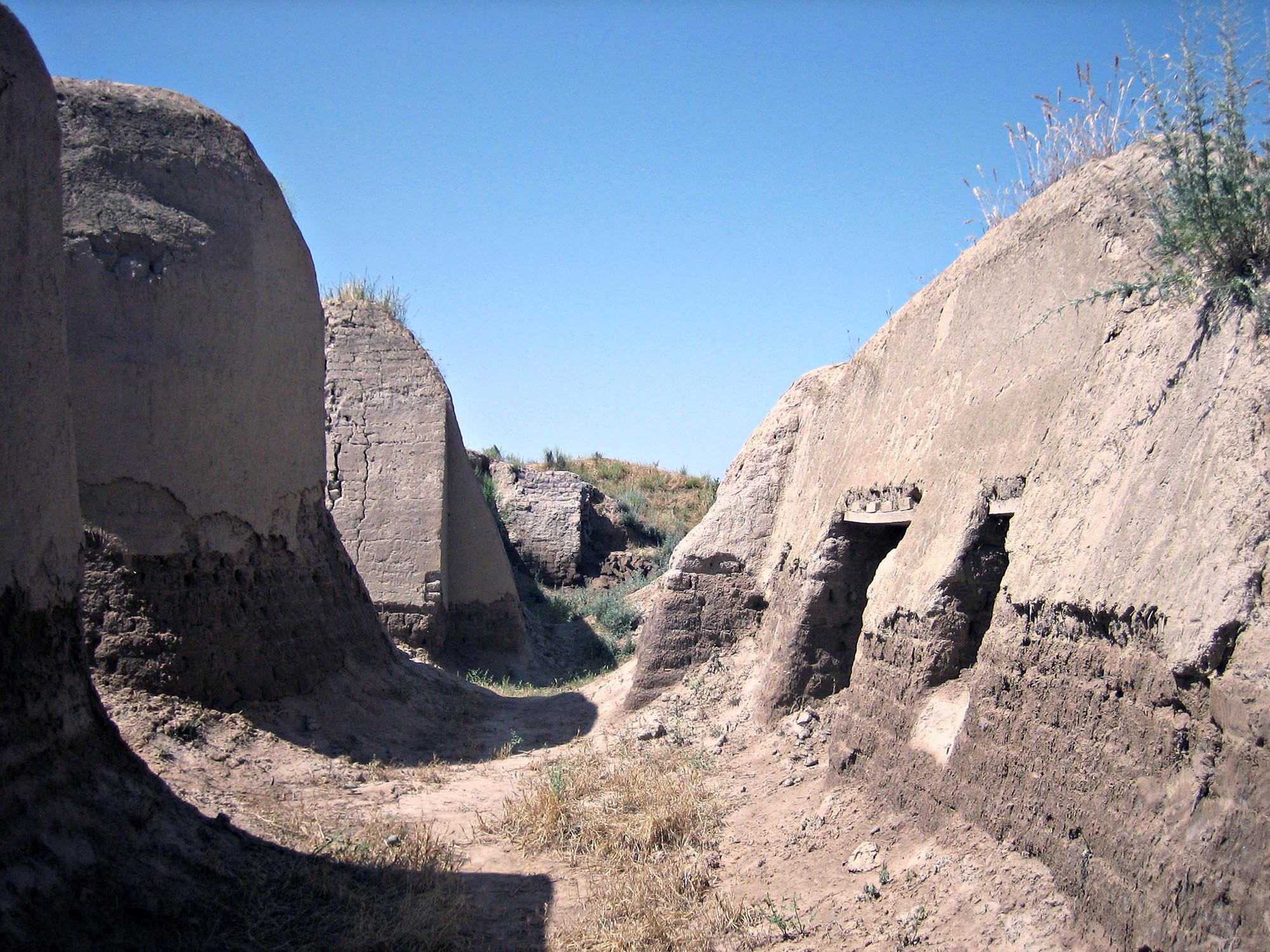Ajina-Tepe, the ruins of a Buddhist monastery of the VII–VIII centuries, is located 20 kilometers from the city of Bokhtar or 120 kilometers from the city of Dushanbe in the southern part of Tajikistan.
Shrines, stupas, images on the walls, cells, statues were found here. The most interesting find is a sculpture of a reclining Buddha, whose length reaches 12 meters.
In 1961, archaeologists arrived here and began excavations, during which more than 500 pieces of art were discovered: statues, reliefs, wall images left over from the cult and living rooms of the monastery. Scientists who visited Kurgan-Tube (Bokhtar) concluded that this structure included two parts, namely the monastery and the temple. In addition, there were a couple of rectangular courtyards, around which buildings and thick walls towered. In one of them there was a large stupa. This is a place for storing valuable items or marking religious buildings. Small stupas of similar shape were located on the edges of the courtyard. The monastery was incredibly beautiful, its vaults and walls were decorated with paintings. Today, everyone who lives in Bokhtar (Kurgan-Tube) can be proud of this former splendor and imagine how amazing it was here in ancient times. There were niches in the walls where small and large Buddha figures stood. Most of the sculptures in Ajina Tepe were dedicated to him. The most interesting find was a giant statue of Buddha made of clay, discovered in 1966 in the corridor of the building.
 Availability: year-round
Availability: year-round Direction: Dushanbe-Bokhtar-Vakhsh
Direction: Dushanbe-Bokhtar-Vakhsh Duration: 1 day(8 hours)
Duration: 1 day(8 hours)  Type of tour: individual, calculation for 2 (2-4 people), for Solo (1 person) +50%
Type of tour: individual, calculation for 2 (2-4 people), for Solo (1 person) +50%- 09:00 - you will be picked up from the residence palce / hotel and departure to Bokhtar city (100 km from Dushanbe)
- 11:00 - arriving Bokhtar and visiting Central square of Bokhtar city
Bokhtar (until 2018 — Kurgan-Tube) is a city in southwestern Tajikistan, the administrative center of the Khatlon region. It is located 100 km south of Dushanbe, in the center of a rich oasis in the valley of the Vakhsh River. According to ancient sources, the Kurgan-Tube oasis appeared during the Kushan Kingdom. It was already a big city that had its own currency. At the end of the VII century, it fell under the rule of the Arabs. Near Bokhtar, on the bank of the Vakhsh River, there are ruins of the city of the X—XIII centuries Lagman, probably together with Bokhtar, which was part of a vast oasis. In the middle of the 20th century, archaeologists discovered ancient water pipes, brick wells and fortifications with towers. This city was one of the largest settlements of ancient Bactria and occupied a relatively large territory of 43 hectares. This oasis was destroyed by the Mongol invasion of Genghis Khan.
- 12:00 - Kurgon Hill - Bibikhonum Museum
BIBIKHONUM MUSEUM. The museum located in the center of the city of Bokhtar, created by the decision of the local government in 1999. Not only the exposition attracts visitors here, an interesting circular museum building with a tower in the middle is a subject of admiration and special pride of citizens. The museum's collection includes more than 1,500 exhibits reflecting the history of the formation and development of the city of Kurgan-Tube. Special attention can be paid to the exhibits of the ethnographic section, because here are presented the most beautiful dresses, various panels, jewelry and numerous samples of ceramic products and household utensils of the Tajiks of the XIX–XX centuries. In addition to visiting the exhibition stands, visitors are invited to climb the observation tower.
- 13:00 - Lunch at national choykhona
- 14:30 - Central Park, walking
- 15:00 - Avesto Museum
- 16:00 - Ajina Teppe Hill
Ajina-Tepe, the ruins of a Buddhist monastery of the VII–VIII centuries, is located 20 kilometers from the city of Bokhtar or 120 kilometers from the city of Dushanbe in the southern part of Tajikistan. Shrines, stupas, images on the walls, cells, statues were found here. The most interesting find is a sculpture of a reclining Buddha, whose length reaches 12 meters.
- 17:00 - back way to Dushanbe
- 19:00 - end of tour
